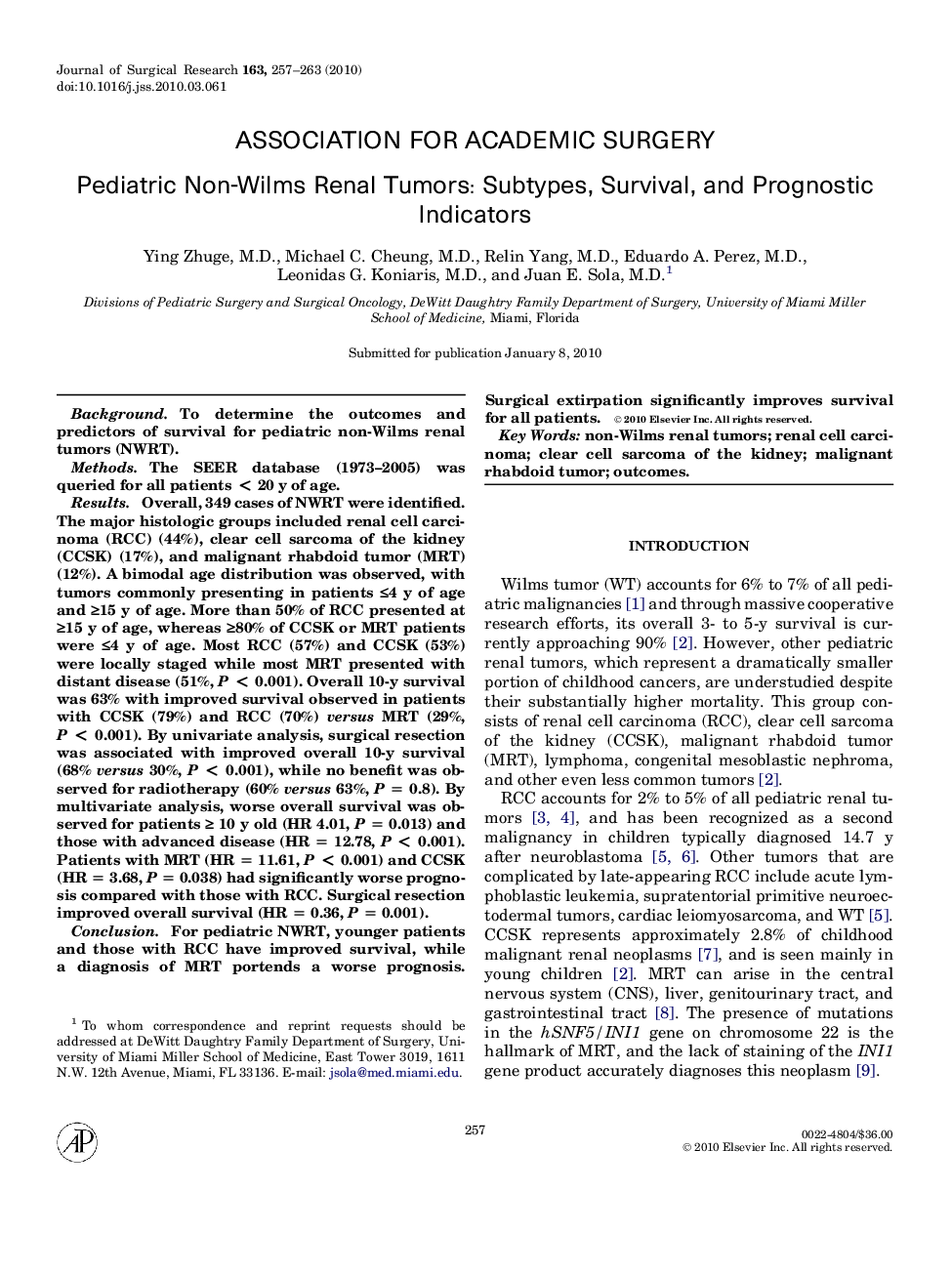| Article ID | Journal | Published Year | Pages | File Type |
|---|---|---|---|---|
| 4303029 | Journal of Surgical Research | 2010 | 7 Pages |
BackgroundTo determine the outcomes and predictors of survival for pediatric non-Wilms renal tumors (NWRT).MethodsThe SEER database (1973–2005) was queried for all patients < 20 y of age.ResultsOverall, 349 cases of NWRT were identified. The major histologic groups included renal cell carcinoma (RCC) (44%), clear cell sarcoma of the kidney (CCSK) (17%), and malignant rhabdoid tumor (MRT) (12%). A bimodal age distribution was observed, with tumors commonly presenting in patients ≤4 y of age and ≥15 y of age. More than 50% of RCC presented at ≥15 y of age, whereas ≥80% of CCSK or MRT patients were ≤4 y of age. Most RCC (57%) and CCSK (53%) were locally staged while most MRT presented with distant disease (51%, P < 0.001). Overall 10-y survival was 63% with improved survival observed in patients with CCSK (79%) and RCC (70%) versus MRT (29%, P < 0.001). By univariate analysis, surgical resection was associated with improved overall 10-y survival (68% versus 30%, P < 0.001), while no benefit was observed for radiotherapy (60% versus 63%, P = 0.8). By multivariate analysis, worse overall survival was observed for patients ≥ 10 y old (HR 4.01, P = 0.013) and those with advanced disease (HR = 12.78, P < 0.001). Patients with MRT (HR = 11.61, P < 0.001) and CCSK (HR = 3.68, P = 0.038) had significantly worse prognosis compared with those with RCC. Surgical resection improved overall survival (HR = 0.36, P = 0.001).ConclusionFor pediatric NWRT, younger patients and those with RCC have improved survival, while a diagnosis of MRT portends a worse prognosis. Surgical extirpation significantly improves survival for all patients.
